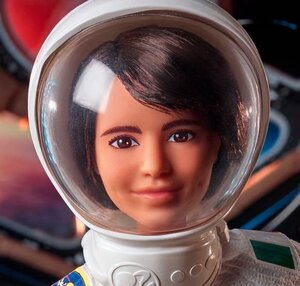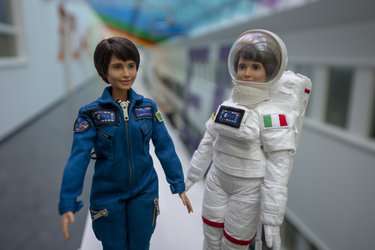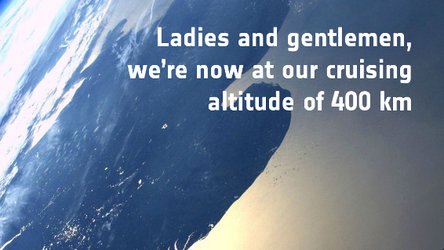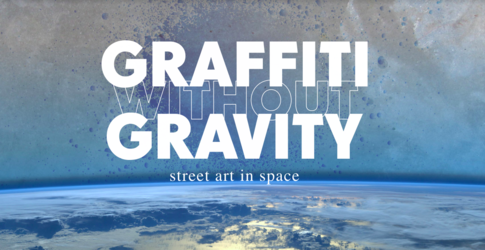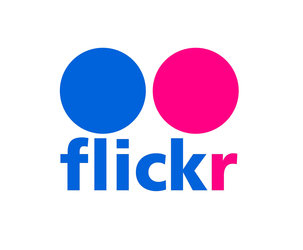ESA and Mattel help to close the ‘Dream Gap’
ESA and international toy manufacturer Mattel are taking further steps to raise awareness of the importance of female role models during times of pandemic and beyond.
Last week, just ahead of International Women’s Day, ESA’s Chief Diversity Officer Ersilia Vaudo Scarpetta joined a roundtable webinar hosted by Mattel about ‘Challenging the Dream Gap: The Importance of Female Role Models in a post-COVID World’.
Launched in 2018 to celebrate the Barbie doll’s 60th anniversary, the ‘Dream Gap Project’ is based on research that has shown that, because of cultural stereotypes and media representations, young girls start to think as they grow up that they are not suitable for certain types of activity.
The initiative aims to challenge these mental barriers by showing young girls their potential is not limited, and one such example was the collaboration with ESA to create two Samantha Cristoforetti lookalike Barbie dolls in order to highlight careers that are under-represented by women. The dolls, while not presently commercially available to the public, were used by Barbie Mattel Italia to promote the ‘Dream Gap Project’ in various events and campaigns.
Connection with inspirational role models has become even more important for young girls since the start of the global pandemic, as recent studies have demonstrated that media coverage of COVID-19 has been dominated by men, that female experts are more likely to be ignored, that the pandemic is more likely to cut off access to education for girls, and that mothers have consistently been more likely to sacrifice work to meet childcare needs.
The virtual roundtable on 4 March included speakers Dagmar Schumacher (Director, UN Women’s Brussels office), Delores Morton (CEO, Step Up), Miriam González (founder and chair, Inspiring Girls), Isabel Ferrer (Marketing Director, Barbie EMEA) with special guests Clara Amfo (British broadcaster) and Kristina Vogel (cycling champion), and was moderated by Andrea Thompson, editor-in-chief of Marie Claire UK.
Here are the ESA Diversity responses from the discussion:
Question: Why are visibility and representation important, in the context of female role models and ESA astronaut selection?
Ersilia Scarpetta: There are two reasons: first, because it’s the right thing to do, in particular when we talk about exploration. We are meant to represent the dreams of humankind and it is also important for our call for astronauts to have a fairer representation of society. In the last selection when Samantha was chosen, the ratio of female to male applicants was only 1:6 and this is something we cannot accept.
Second, it is also the smart thing to do because it is through diversity of perspectives that we can foster innovation and get closer to the future. Therefore, we have to be able to reach out to a much larger community beyond the usual connections. A new narrative for exploration plays a big role in this – space is not a race, it is not conquering something. Exploration is something that makes visible the values that drive us and these values are inclusion, diversity, knowledge and inspiring the young generation. It’s true that astronauts, with their inspirational drive and extraordinary impact, are great role models for girls to project themselves in the future, beyond stereotypes and social bias as the explorers of tomorrow. But dare I say this (astronaut selection) campaign is about diversity and inclusion, and we hope to receive a much larger share of applications from women. This is also why this kind of partnerships are extremely important for us, it is a way to reach out to the great community that Mattel has.
Question: What has been the impact of COVID-19?
Ersilia Scarpetta: This is something we are now going to explore – we had a drop in applications from women to ESA in 2020. It’s interesting because on one side we have positions, for example for younger people, that had more or less the same kind of participation, but with respect to permanent jobs that usually address the older population, we had a drop. We see first-hand how much this crisis has hit women. It has probably doubled the burden of work and family, and even the ability to plan ahead. We also want to see with other research organisations in Europe if they experienced the same fall in applications. We know for sure there has been a big hit in terms of scientific publications, the number has been going down very steeply during this period and this will for sure penalise women in research and we see how this also applies to jobs in our fields.
Question: What can we do in outreach and how can we close the ‘Dream Gap’?
Ersilia Scarpetta: First, we work a lot on role models. We have the chance to represent one of the most inspirational ‘businesses’, which is space. We have brilliant colleagues all over Europe, so we promote their presence and possibilities for them to do outreach and also be a role model, but also a role model of ‘proximity’. We believe that you have to be able to relate with your role model, so we encourage our younger colleagues to go to schools. It’s easier for young girls to see themselves in 24-year-olds as compared to someone in their fifties.
Another thing we consider extremely important for the Dream Gap is to try to give value to failure. Failure is something that can block girls very much. There is a correlation where, in countries with high gender equality, girls are more afraid to fail than in countries with low gender equality. This is very interesting, and the relationship with girls’ anxiety to fail, or to be up to expectations, is something that should change completely – this paradigm should change. In the past, NASA’s motto was ‘Failure is not an option’. Today it is ‘Fail early, fail smart’. This is also the way we are now engaging girls in space activities – by ‘getting their hands dirty’ doing things, and not being afraid of a failure since it is no less than a step towards success and a great opportunity to learn.



